’58 Ford Custom 300 photo by Stephen Pellegrino.
My name is Rafael Fabius, I live in Uruguay, a small country wedged between Argentina and Brazil; a place a little bit off the usual beaten path of the general Curbivores. Still, I often see CC pics of cars taken in my country that may seem odd to first-world eyes. Curbivore sightings I’m always happy to see.
My earliest memory dates from June 1969, when my grandparents handed me as a gift a beautiful blue ’58 two-door patrol Ford Custom 300 with lights and all. Well, it looked beautiful to me. It was pure plastic, no windows, just the shade-in dies. But the important thing was that, for me, it was exactly the same as Dad’s car –bar the color, the doors, and the generally crappy quality of the model which didn’t allow for any details.
’58 Ford Custom 300 photo from the Cohort by tbm3fan.
In Uruguay, as in many other places in Latin America, larger cars used to be more expensive to buy and operate; gas was more costly and there were many taxes in the 1960s and later. Imports were a huge expenditure of hard currency, so countries began looking for ways to improve their trade balance and banned car imports for the general public, replacing them with local production. In larger countries like Brazil and Argentina, auto manufacturing eventually evolved into a full-fledged industry. In Uruguay, because of our small size, the industry never developed beyond the assembly of CKD, with local factories providing glass, upholstery, sometimes paint, tires, and trim. But I digress; this info will be relevant for several future installments.
1958 Ford Custom 300 image from Wikipedia.
Back to the Ford, Dad’s car. It was a ’58 Custom 300 sedan. Black on black on black on black on….well, you get the idea. A complete stripper, save for the anodized aluminum insert on the sides of the rear doors (which I have read was an option), with power steering, and automatic. Of course, it had a 223 six and dog dishes. Dad missed his 52 Mainline V8 Overdrive, but that was a flathead. I don’t think he was missing anything.
I remember my family piling into that Ford for vacations and excursions. Mom and Dad would load that Ford; probably the car most used for vacations and excursions in our family’s history. Mom and Dad would bring my grandparents, my two older brothers (10 and 8, more or less), and the baby (yours truly) with a prodigious volume of food, a picnic table, a tablecloth, two bicycles for the kids, and drive to a park that was not too far away but that seemed to be an untouched wilderness. There we would have corned beef on rye with pickles, mustard, vegetables, and schnitzels, either as a sandwich on white bread or just for the plates, smoked white fish, and schmaltz (greasy) herring. The drink would inevitably be cold tea. My grandma would prepare her Honig Lekaj (honey cake) and her apple cake (My parents and all my grandparents were Jewish Lithuanian immigrants, the food reflected this, and still does).
We’d meet my uncles, aunts, and cousins there. Of course, those relatives were much more rational and used to drive a VW Bus when their business required loading. I always wondered why their cars had the shift lever in the wrong place, which for some reason my Dad seemed to not like. That picnic place is now a densely populated and very expensive neighborhood with houses and high rises, with BMW and Porsche dealerships. But at the time, Dad found his Sundays there as a great place to escape from his full week as a cardiologist.
Ford in 1958. Ad from Argentina.
As said above, cars in Uruguay were very expensive, and larger cars, even more so. Therefore, a Custom 300 was an impressive car, never mind that it was no Fairlane. Dad loved American cars, with the belief (quite true at the time) that they were safer, more agile (not true), and more comfortable (absolutely) than the typical European mid-sized car available within the same price range. For example, he could have gotten (this was in 1963) a brand-new Beetle for less, a brand-new Fiat 1500 sedan for about the same price, or an Alfa Giulietta 1300 for a bit more.
By 1971 the Ford was painted over rust, and the engine was smoking badly. Time for a change, he had owned the Ford for 8 years. I don’t know how much he got at trade-in time for the vehicle, but the car that came in its place is associated in my head with a wonderful childhood and early teenage years.
It had to be American, no question about it. As I told you above, Dad liked big engines in big cars. Candidates were a ’66 Impala SS 396 with a four on the floor my brothers went bonkers about until they opened the hood and oil was dripping… from the hood, not just beneath the engine. There was a ’67 Pontiac Grand Prix, which Dad liked a lot. That is until he remembered his parking space at our building was tight. He had the seller come over (Montevideo being a small city) and tried to park the Grand Prix in the spot. The space through which the car had to fit had perhaps an inch on each side.
After some other similar encounters, a friend of his who was into cars came over with an offer. A brand-new BMW 2002. Everybody knows how a 2002 looks and is, and Dad liked it a lot, even if not being American. It was small but had a great engine, and he didn’t give a damn about heavy steering. Then again, he had two as yet unlicensed teens at home. The driving age here is 18, and my oldest brother was only one year away from getting his license. Dad wisely decided a fast car wasn’t the best family choice at the time, and continued looking.
And then, it appeared. An acquaintance who sold cars called to say he had a Chevy Nova with less than 40K km. Dad told him: “I don’t like Novas, they look like a shoebox”. The seller said: “You haven’t seen a ’68, have you?” “Well, I don’t know…”
Said ’68 Nova had entered the country as a diplomat car; for the USSR embassy! Talk about irony.
Dad and my brothers went to see it, liked it, and brought it home. The ’58 Ford was taken as a down payment, and would shortly appear again near our home driven by a man who shortly thereafter became one of the most famous comedians in our nation and Argentina. The comedian most likely didn’t keep the car for more than a couple of years and if I had to bet, the Ford was probably worked into his comedy routine.

The Nova fit into our garage much easier than the Grand Prix. The Nova had an optional engine, a 230, three on the tree –let’s get there faster. It was a Nova 113 with only the following options: Power brakes, Soft Ray tinted glass all around, AM Radio, no decor options, dog dishes on painted wheels and manual steering. Plus that amazing GM style that you would recognize anywhere, even as a sedan. The brochure picture above with a Nova turning from E 61 St towards 5th Ave in Manhattan seems a little over the top, unless it was a serviceman for some of the buildings.
That car in the photo has an optional engine, as can be seen by a tiny number in front of the front side light (amber color, just for 68). The 4 cylinders and 230s, lacked this. The pictured car probably has the Custom Decor option, with full wheel covers, chrome-covered rocker panels, chrome molding in the mid-body that ran the length of the car, and chrome-covered windowsills. It also has a trim piece between the rear lights. Ours had nothing of the sort, but it was the same color, teal. I guess that’s when my lifelong love of the color began.
That beautiful teal color didn’t last, since it lost its shine quite quickly. One day my brother decided that we should take the issue into our own hands and polish the car. He brought his Black and Decker polisher and gave me, in his most gracious way, some paste and a rag. We spent a whole summer afternoon and we only got about a fifth of the upper part of a front fender to shine a little bit. Then we both decided this was a job for a professional (I was 13, he was 21).
There were very few 1968 Novas in Uruguay at the time. And there were some Argentinian Chevys, about which much has been written, though they weren’t called Novas over there. Let’s talk about those a little bit.

1970 Argentinian Chevrolet Chevy Sedan (Test del ayer)
Even if you can’t read Spanish, you can find at the above link some pictures of the Argentinian 1970 Chevy Sedan (no Nova there), which could be mistaken for a 1968 American model.
Of course, most or all metal panels are the same and there weren’t too many differences, early on. Some would accrue as the years advanced. The ’68 dashboard would remain the same until 1978 when GMA left Argentina. Other items that remained unchanged throughout its run were the ignition switch, the flasher switch horizontal on the right side of the steering column, and the HV panel on the left (Items that would be updated in US versions). The lights, front turn signals, and backlights would remain unchanged throughout production too.
What did change in pattern were side markers –some had a light, some did not, some were larger, and some smaller. In the place of the front side marker, the first Argentinian Chevy carried the engine size, no light. Later they would add the light, though most of the time they would carry lower-cost reflectors. As no V8 would ever be offered in Argentina, the only engine sizes were 230 and 250. Though initially in Argentina the car came only with a three on the tree, it soon changed when an automatic became available, with a steering column selector. Also, a four-speed manual was added to the options with floor floor-mounted lever.
There was a luxury sports model called the SuperSport, which was really similar in looks to a Nova SS, save for the chance of having it in 4 door configuration:


Something interesting was that power brakes with front discs were installed very early in the production run. There was no power steering until 1978 and no factory air conditioning, only dealer-installed units. No power windows, ever, and there were several trim lines, including plain ones for taxis.
Let’s return to my brother. The thing is, he was working for a guy who had a side business restoring and exporting antique cars. Uruguay had quite an interesting and diverse fleet of them at the time, as expensive cars were imported one by one in the 20s and 30s. Examples around the nation were a Cadillac V16, (one), a Cord L29, several 810s, and a Pierce.
So, my brother comes over to Dad and says, “We should have the Chevy sandblasted, it’s already showing rust on the sides”. Dad laughed out loud at the idea. However, a few days later the 230 began to drink more than its daily quota of premium, after having decided oil was quite a nice dressing. By the quart. Since the car was not that old, Dad had the engine rebuilt by his lifelong mechanic. When the car came back from the shop I ran to hear how the engine sounded. There were odd sounds I can still recall almost fifty years later.
I said: “Hey, isn’t it supposed to sound like new? Something’s weird here…”
Well, the ’68 Chevy was put into daily service again, only to keep consuming oil in alarming quantities. By that time my older brother became CPA for the largest GM dealer in Montevideo and took the car to the official shop. He told them: “The engine has 20K km on it, what’s wrong? It’s been rebuilt!”
A couple of days later, with the engine dismounted, the GM mechanic called and said: “You said the engine was overhauled? It’s been machined wrong. This engine is worse than bad. It’s deader than roadkill”.
So a family meeting was called to decide what to do (I was present but don’t think my vote was taken into account). I was ecstatic about getting a new car, which of course I wouldn’t drive because of my age, but Dad began to look for a replacement. Little did any of us know what the future would bring. Some deeply cherished automobile values would shortly be shattered.
Related CC reading:
Curbside Classic: 1970 Chevrolet Nova – Have It Your Way
Curbside Classic: 1969 Plain White Chevrolet Nova – Building a Barer Way To See The USA







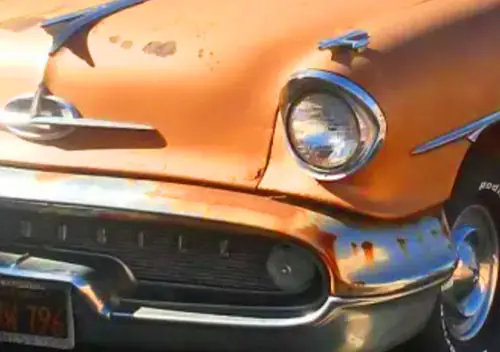
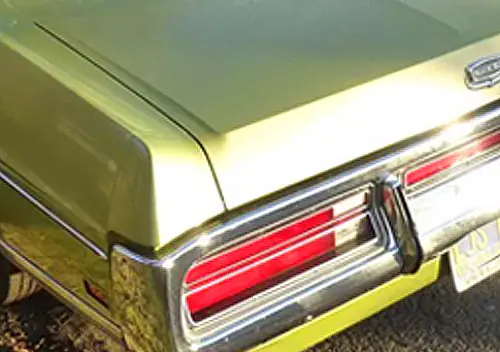
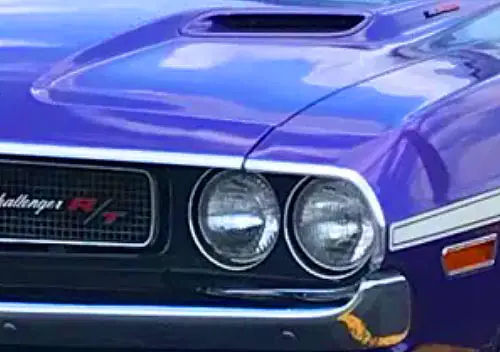

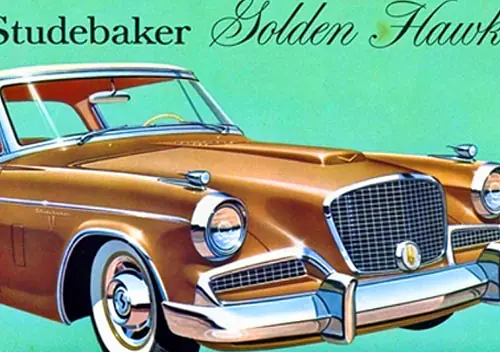
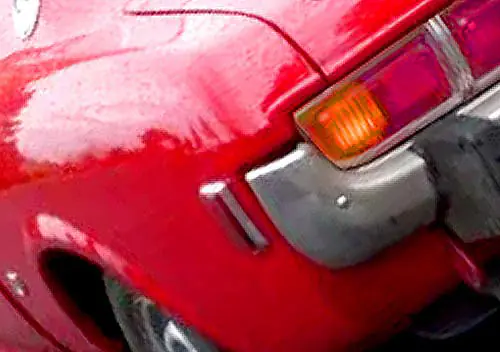
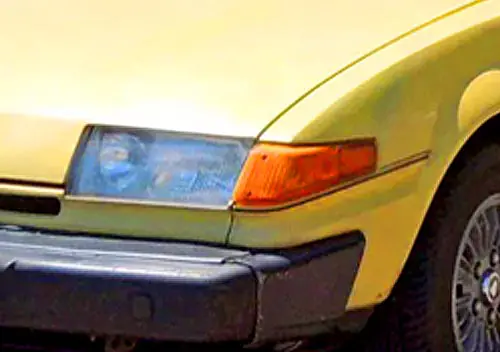
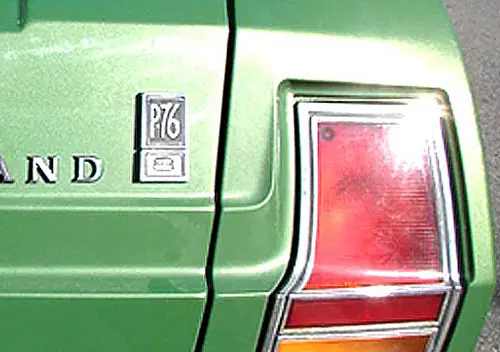
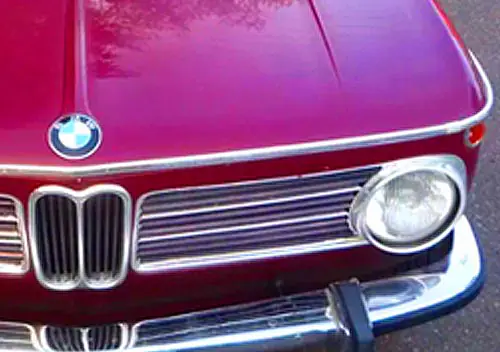
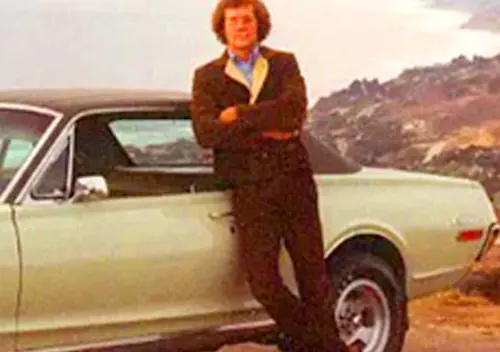

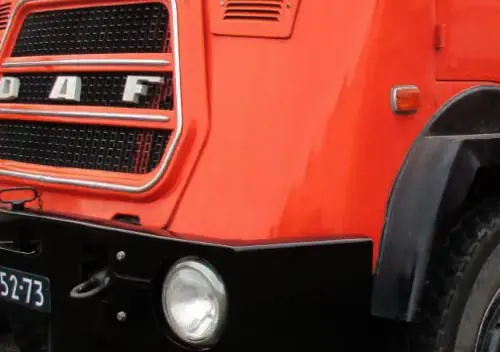
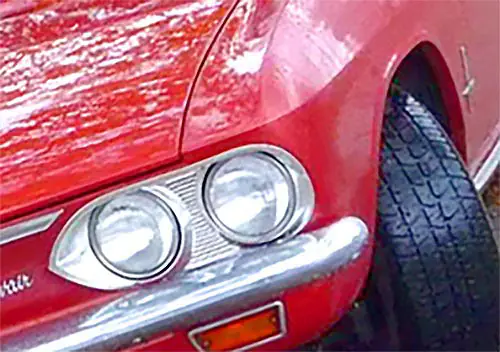
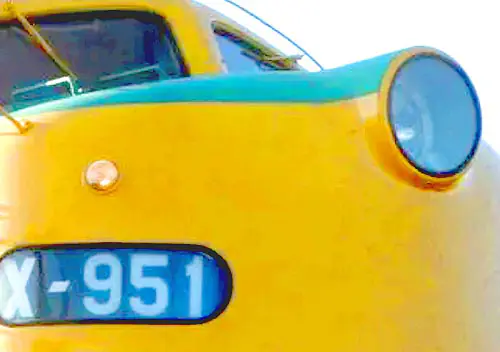
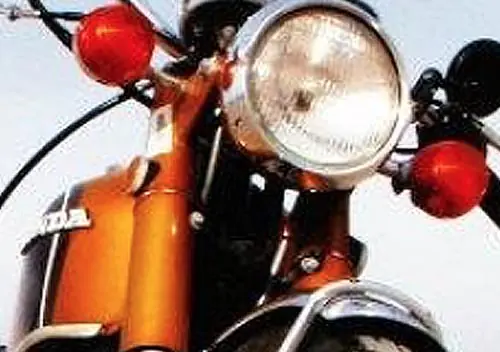
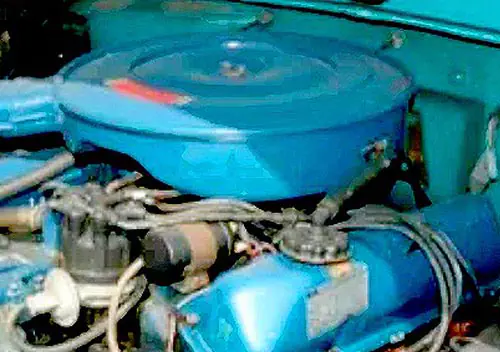

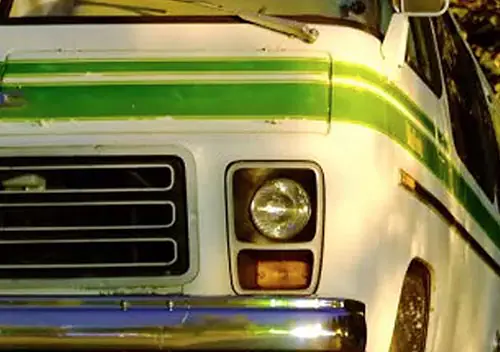

Really enjoyed reading this, Rafael. More please!
I think the ’68-shape Nova is – whatever its virtues as an actual car – a very, very sweet looking thing – even in stripper mode and with a badly-rebuilt engine.
Thank you so much for your kind words, Justy! I fully agree regarding the Nova
To make the ad for the Nova on 61st Street and Fifth Avenue, the ad agency is lucky that the NYPD didn’t have the car towed. Been there, done that!
Great read!
Thank you so much, Sam!
Yes, definitely a great read; thanks, Rafael!
Thanks for that, RRJ!
58 Fords got the nickname Goldflash here and they were quite popular for many years with most becoming street machines in their later lives, not very many left now they had a habit of rusting quite badly,
Novas, nope none, plenty of similar sized GM cars though which were popular.
Yes, that’s my 1958 Ford Custom 300 in Photo #1; same options as your dad’s car–6 cyl. engine & power steering. The car in Photo #2 looks rather dignified in all black–I would agree that this Ford would be a much more desirable family car than a lot of the foreign makes that would be available. Worth the premium.
The survival rates on these ’58 Fords is terrible; they rust easily and there was little to no collector interest in later years (except for the retractables). When I bought my car it was one-family owned, passed down from father to son. It’s unusual that someone would hold on to and save a car like this. To me, that’s part of its charm and uniqueness. These Fords were once quite common, but are now virtually extinct.
I have one South American connection: One of my grandfather’s brothers left Italy but instead of emigrating to the U.S. went to Paraguay and became a priest. When I tell people this, they don’t know where Paraguay is!
You need a dashboard shot (my actual car):
A beautiful survivor you have Stephen .
-Nate
Stephen, thank you sou much for the comment and the car. My dad’s car was really shot in the floor when he traded it in. Bearing in mind the cost of those cars here, they tended to last a little more time because manpower was cheaper and it paid to repair them, so, they usually lasted a little over 15 years. Probably not much more than that.
“I have one South American connection: One of my grandfather’s brothers left Italy but instead of emigrating to the U.S. went to Paraguay and became a priest. When I tell people this, they don’t know where Paraguay is!”
We deal with this on a daily basis. In fact, Uruguay has no borders with Paraguay, as Argentina and Brazil are in the way. Paraguay is not so small as Uruguay, but nonetheless nobody knows where we are. Every now and then people become acquainted with a famous soccer player, and that’s it.
Great article – thanks for this! Given your family’s trips involving taking seven people, I completely understand your father’s preference for big American cars. The Ford seemed to have served your family very well.
I think it’s hilarious that your dad’s Nova had been a Soviet diplomatic vehicle. That actually seems like a topic from a comedian’s routine too.
Your “first memory” story made me wonder how many CC readers’ first memories involve cars? Mine does (when my parents’ Galaxie 500 was hit by a drunk driver while parked in front of our house). I suspect a lot of us have similar early car memories.
Looking forward to future installments!
Thank you so much for your words, Eric. I’ve always thought that it was hilarious, and until not too long ago there were some papers that showed the name of the guy who had ordered it. Mind you, I’ve only seen one Soviet car in the embassy in all my life, which was a 1974 Volga in a nice maroon color. All the rest were either big American GM vans, or Mercedes and Volvos. Currently I believe they have nothing but Mercedes.
Thank you Sir ! .
Interestingly those ‘thin wall’ engines tended to get rather severe cylinder taper unless the oil & filter changes were right on time, every time .
This led to more than a few bargains that smoked with only 40 ~ 50 thousand miles on them .
As I learned from an elderly Chevy Mechanic if the pistons are good (or you replace them) it’s possible to re ring a smoking inline 6 banger and stop the smoke entirely .
When I lived in Guatemala, Centro America in 1976 my wife’s uncle had a huge AMC Matador like your father’s ’58 Ford : total stripper with i6 engine and three on the tree, he was impressed by the SIZE of the car more than anything else .
The Argentine sales brochure is terrific, all those imports we didn’t get .
-Nate
Thank you so much, Nate! It’s interesting, as nobody understood why that engine (which was religiously maintained to the best of my Dad’s knowledge) would get busted. Anyway, it was nowhere as common as in other parts. Mechanics would know a Chevy 6 in line, but would rather fix a VW.
Thank you for sharing your stories with us. Uruguay (along with its neighbor, Paraguay) is one of the least well-known South American nations, and I look forward to learning more.
Thank you for your words, Evan! It’s common knowledge, but wrong, that we are neighbors with Paraguay. In fact, Brazil and Argentina are wedged between the two countries. Paraguay is much larger than Uruguay. You’ll read more about Uruguay and some comments about Paraguayan cars, which I used to see when they came for vacationing.
Welcome Rafael; I’ve long been looking forward to this. What a terrific start.
I have similar memories of outings in Austria of ridiculous numbers of family and relatives piling into a hired car, in our case. Fortunately the hired car was a large ’49 Olds.
The variations in how cars in places like Uruguay were specified is always fascinating. 4-speed on the floor, but no power steering.
Looking forward to more.
Thank you so much Paul for your warm welcome.
The specs of the American cars sold here is a mystery for me. But I’ll probably have more material about that later.
I believe, though I’m not sure, that mechanics were too used to simple machines, so they ran with the idea that “everything that can break, will, and if it breaks and I don’t know how to fix, I won’t be able to save my face”. My current mechanic, which is an old friend and is now 70 years old, has his shop being run by his son, who is about 35.When I ask his opinion about a car, he always says. “why you need an automatic? Your leg doesn’t function anymore?”, “air conditioning is not a good idea” and so on and so forth. And when you don’t pay attention he fixes whatever is put in front of him. I think there’s something in the way of thinking around here…
There was a lot of love in that gift from your grandparents!
Everybody should have at least one grandparent like those. They are the stuff that family legends are built on. I appreciate enormously the comment.
I love reading about experiences with American cars in far-off places. That 58 Ford would have been impressive in its day!
The Nova didn’t treat your father very well! I look forward to what comes next!
I would have guessed that there were Chevy 230/250 6s available in junkyards and installing one of those would have been much less expensive than buying something else.
Guess not.
Think this way, the Nova here was as common as an Opel Rekord would have been in the US. They simply were not available, either in junkyards or shops.
Rafael: Thanks. I’m very interested in Uruguay, Argentina and Chile and of course the cars there. I’ve got some comments and questions:
1. Were the picnics in Carrasco? I guess it could be the area.
2. I’m surprised by the soviets owning a Chevrolet but I don’t think Russians were liked in the southern cone. In about 1990 I refused to get in a Lada taxi in Vina Del Mar, Chile and waited for the next taxi at the cab stand – which turned out to be an Oldsmobile Cutlass. So maybe Russian cars were just too obvious in Montevideo? They needed something discreet or common like a Nova?
3. Did you ever own the wonderful 1/43 scale Buby Toys Nova model from Argentina? It was a ’68. My version is a light blue and I got it at the flea markets in San Telmo, Bs. Aires. Very well done.
4. Finally, there is also a 1/43 scale Buby ’58 Ford four door sedan. It is crude compared to the Nova. I have one of those too. My copy is in very poor condition. I got that one also in Bs Aires.
Write a lot more about the cars in Uruguay. I am anxious to read more! Thanks.
Hi, Constellation!!!!!
1)You left me cold….yes, that’s were the picnics were. We moved a little bit during the years, but definitely that’s the general area. Have you ever been here?
2) It’s wonderful to compare the points of view from people far away. There were absolutely no Russian cars in Uruguay until 1982, and very few Russian persons. It was so much so, that Jews in Argentina primarily but also in Uruguay were called “Russians”, whether they came from Russia, the Baltic states, Poland, even Hungary. So no, that Volga was an absolute lone car and nobody realized it was Soviet. And when Soviet influence area cars began to be imported in 1980, (Skoda, Polonez, Lada, Zastava) they were successful because the prices were absolutely cheap. Of course, you get what you pay for. There are many political reasons for this, which in part are opinions and in part are facts, but this is not the place where I can really explain my point of view. Nonetheless, your opinion is really interesting.
3) Never, I was only interested in scale cars as a kid, and all imported into Uruguay were Lesney’s
4) Same as the previous one 🙂
Will do my best. I never understood fully why a tiny market would have differences with the largests in the world.
Try to get parts for a Pobieda, Volga or Chaika in South America and you’ ll understand why Russian diplomats preferred western cars. Not to mention that it was easy to resell them, at thrice the money you paid for.
I don’t even know who had the power of decision for which cars were to be got. At least here, what you say holds true.
Thank you so much, Justy! I fully agree 🙂
Sorry to everyone for not having answered sooner. I didn’t have access during the weekend.
And thanks to all for your warm words.
Yes, any American full-size car was impressive here, whatever its model and options.
The Nova didn’t treat him well, but that didn’t turn him off from American cars. Anyway, this was his last American one…there were more chocices and American cars were selling for more.
Rafael, awesome article!!! Loved it!!!
Welcome aboard Rafael, and with a nice and well told tale.
Is it me or does the Nova give off big Hillman Avenger after a work out vibes?
Thank you so much, Roger!. I truly appreciate so many warm welcome messages from people whose articles I have been reading for so long.
Hi Roger!
I’ve seen I never answered the second part of your comment. When I was a small kid and didn’t have a clue about the corporations, just the cars, I remember seeing a clear similarity between the Dodge 1500 (i.e., the Hillman Avenger built in Argentina and sold here) with our Nova. It was much smaller, that’s true. But it was a sedan with a flowing fastback rear section, slab sided with mild curves….there definitely are vibes.
Thank you so much, David!
I’m in ny state near ct. A fellow has an Argentinean, not a nova to car shows. Neat differences, think his has a four bucket seat interior.. Some other little touches also.. Cool cars.. Great story, what’s next in store..!!!???
Hi Tom, sorry for not answering sooner. It should come as no surprise that an American got a foreign Nova for show, but it’s quite a job to find one and bring it back!. The four bucket seat interior is not factory, the rear seat was always a bench, even though they were much more luxurious and curved than the original. As they came off factory, a gearhead would find lots of differences. American cars as a total always had specific options, so you could theoretically build millions of cars that were the same but differently optioned. Not so in Argentina. You had two bodies (coupe and sedan), two engines (230 and 250), and according to year 3 trim levels, one of which was just because of an automatic transmission. Most years power steering and air conditioning were not available, though a 3 or 4-speed was usually no problem. A 4 door sedan with a 4 on the floor, factory built, was very common, mostly with the SS Sedan. Just with that, even if in the US you could probably find a dealer who’d help you order one I doubt somebody would be interested. An interesting thing is that the dashboard was a 68 and they kept the switches up to 78, most interestingly the starter switch on the dash